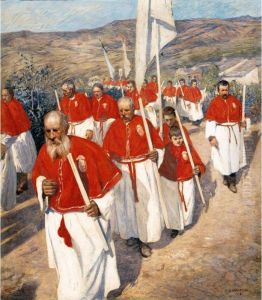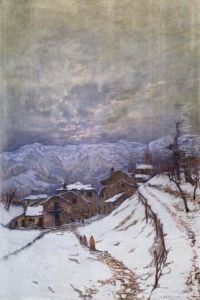Augusto Baracchi Paintings
Augusto Baracchi was an Italian painter, primarily known for his landscapes and genre scenes. Born on April 21, 1867, in Florence, Italy, he developed an interest in art at a young age. Baracchi's work was influenced by the Macchiaioli movement, a precursor to Impressionism in Italy, which emphasized the use of patches of color and light to capture the essence of a scene.
Baracchi studied at the Academy of Fine Arts in Florence, where he was influenced by the works of the great Italian masters. Despite the prominence of the Macchiaioli movement during his formative years, Baracchi's style also incorporated elements from the earlier tradition of the Italian Renaissance, which can be seen in his attention to detail and composition.
Throughout his career, Baracchi traveled extensively across Italy, drawing inspiration from its diverse landscapes and people. His paintings often depict the Tuscan countryside, coastal scenes, and everyday life in rural Italy. Baracchi's work was marked by a particular sensitivity to the changing effects of light and atmosphere, which he rendered through a delicate palette and fluid brushwork.
Baracchi's contributions to Italian art were recognized during his lifetime. He participated in various exhibitions, including the Venice Biennale, and his work was collected by art lovers and connoisseurs. Despite this, he did not gain the same international recognition as some of his contemporaries.
Augusto Baracchi died on August 10, 1952, in Florence. Although he may not be as widely known today as other artists from his era, his paintings remain valuable for their portrayal of Italian life and landscape in the late 19th and early 20th centuries. Baracchi's work is held in several Italian museums and continues to be appreciated by those who are interested in the period's regional art movements.

